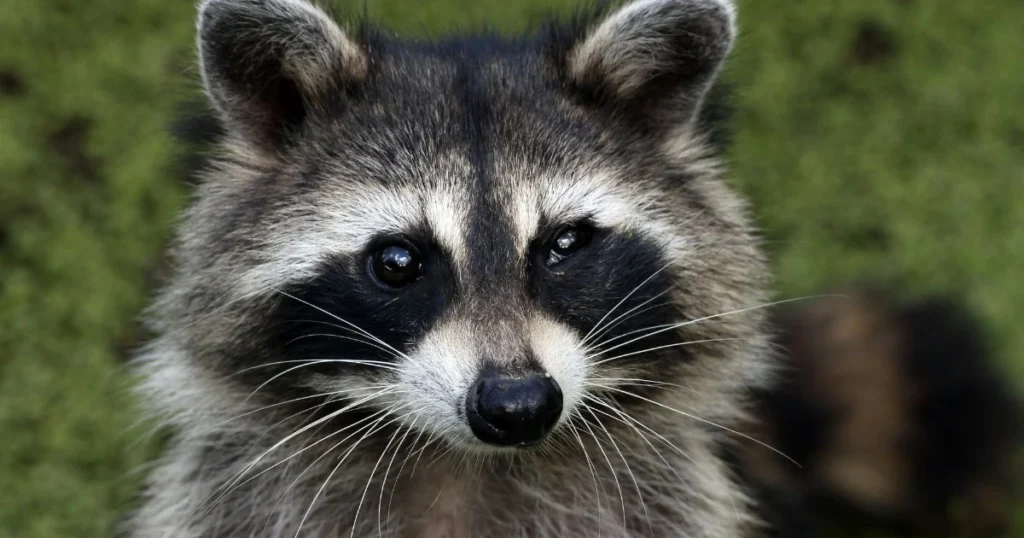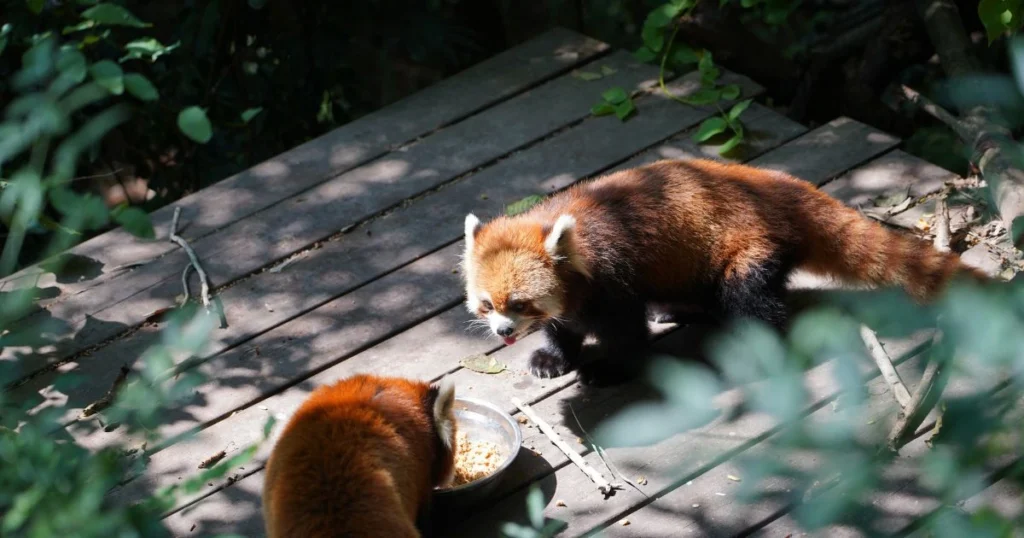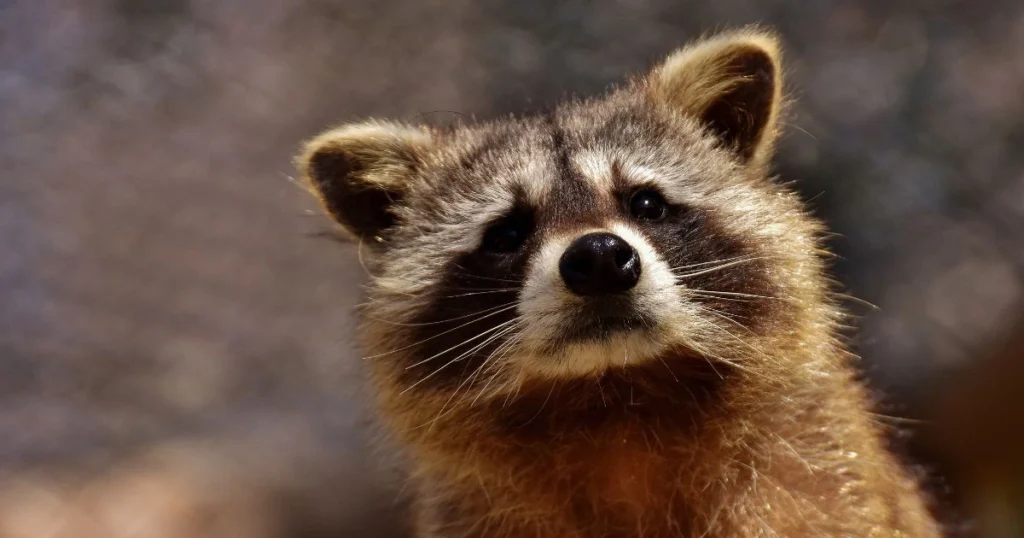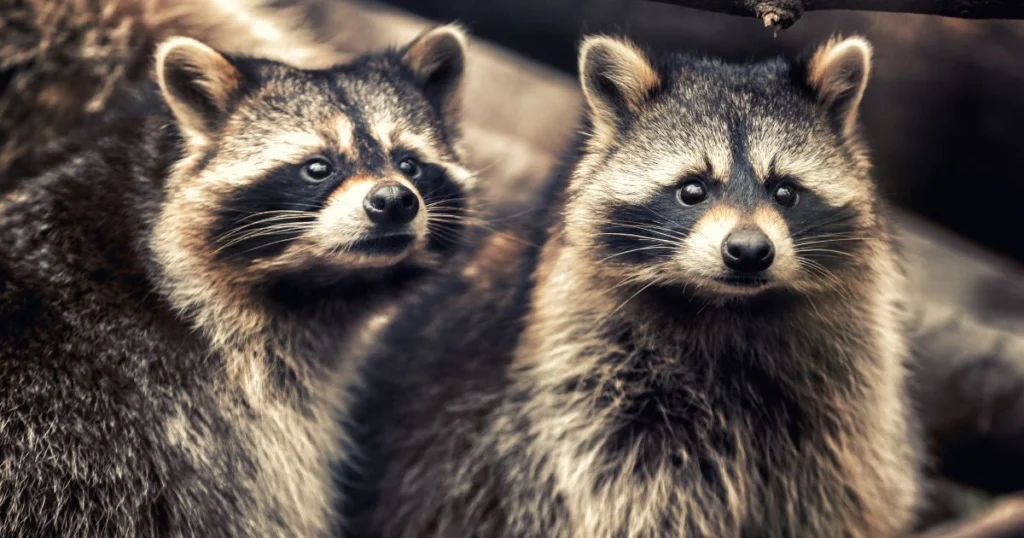
Raccoons are fascinating creatures known for their distinctive appearance and curious behavior. Their fur primarily features a mix of gray, black, and white colors, which helps them blend into their natural environment. The black “mask” around their eyes is a well-known characteristic that adds to their unique look.
Additionally, raccoons can display variations in color based on their geographic location and individual genetics. While the common coloration is predominantly gray, some raccoons may appear more brown or even slightly reddish. Their tails, typically ringed with darker bands, contribute to their striking appearance and serve as a visual identifier.
Understanding raccoons' colors enhances appreciation for these animals and highlights their adaptability in various habitats. Observing these colors in the wild provides insight into their behavior and survival strategies.

Identifying raccoons involves examining their physical traits and various color variations. These features help distinguish raccoons from other animals in their habitat.
Raccoons are medium-sized mammals with distinct physical traits. They typically weigh between 8 to 20 pounds and have a body length of 16 to 28 inches, excluding their bushy tails, which can add another foot.
The most notable feature is their facial mask, formed by dark fur around the eyes, which gives them a unique appearance. Their fur is generally coarse and dense, providing insulation. Raccoons have a stocky build, with short limbs and dexterous front paws, which allow them to handle food and manipulate objects easily. This combination of features makes them very recognizable in the wild.
The primary color of raccoons is grayish-brown, although variations can occur based on their geographical location and habitat. Some raccoons, particularly in northern regions, appear with a more pronounced reddish or even black coloration.
They often exhibit lighter underbellies and a ringed tail, which features alternating light and dark bands. The distinct colors and patterns help them blend into various environments, from forests to urban areas. Melanistic, predominantly black raccoons can also be found but are less common. Understanding these color variations aids in identifying them accurately.
Raccoons exhibit distinctive color patterns that contribute to their unique appearance. Their fur color and markings are crucial in their identification and camouflage.
Raccoons are known for their characteristic facial mask, which consists of dark fur surrounding their eyes, creating a striking contrast with the lighter fur on their face. This black mask adds to their expressive appearance, helps reduce glare, and enhances their night vision.
The rest of their body fur generally ranges from gray to brown, with variations depending on the individual raccoon and its environment. The fur on their underbelly may appear lighter, typically in shades of cream or white. Raccoons often have distinct rings on their tails, usually alternating between dark and light, reinforcing their visual identity.
Raccoons may experience subtle color variations with the changing seasons. During winter, their fur becomes denser and may take on a lighter shade, helping them blend into snowy environments. In contrast, their summer coat is generally darker and more vibrant, adapting to the lush greenery of their surroundings.
These seasonal changes can enhance a raccoon's camouflage, providing better protection against predators. External factors, such as location and habitat, can also influence the intensity and pattern of these color changes, making each raccoon’s appearance unique throughout the year.

Raccoons exhibit a variety of colors and patterns across different species. Understanding these variations is essential for recognizing the diversity within this adaptable mammal.
The most well-known species is the North American raccoon (Procyon lotor). This species is characterized by its distinct coloration, which typically includes a gray and black fur mix.
Their signature facial mask features prominent black markings around the eyes. The fur can appear lighter or darker depending on the region and the individual raccoon. In some cases, North American raccoons may exhibit an unusual condition known as leucism, resulting in lighter-colored raccoons.
These color variations can help them blend into their environments and aid their survival strategies.
Common colors for raccoons include gray, black, and brown, often with a mix of these shades. Most raccoons have a soft, fluffy coat that appears grayish overall, accented with black and white markings.
In some regions, lighter-colored raccoons have been observed. These individuals may have predominantly white or cream fur, which can be quite striking.
The tail often displays distinct rings of alternating colors, typically black, brown, or gray. Raccoons' diversity in color serves not only aesthetic purposes but also functional roles in their habitats.

Raccoons exhibit a range of colors influenced by genetic factors. This section explores the variations that arise from unique genetic traits, including albinism, melanism, and other rare colorations.
Albinism in raccoons results from a genetic mutation that inhibits melanin production. These animals appear white or pale, often with light blue or pinkish eyes. This condition affects their camouflage and can increase vulnerability in the wild.
Melanism, on the other hand, causes an excess of melanin, resulting in a darker coat. Melanistic raccoons may display charcoal or black fur. Both albinism and melanism occur infrequently in raccoon populations, making these individuals of particular interest to researchers and wildlife enthusiasts.
In addition to albinism and melanism, raccoons can exhibit other rare color patterns. Variations such as cinnamon, silver, or even gray occur due to specific genetic variations affecting fur pigmentation. These colors may appear unique within specific environments or regions.
While not as common, these rare colorations can emerge in raccoons due to breeding in captivity or isolated populations. The unique appearance garners the attention of collectors and wildlife watchers, contributing to the fascination with raccoon diversity.

Raccoons' coloration can significantly vary based on their habitat and adaptations to local conditions. Environmental factors play a key role in the shades and patterns observed in raccoon populations.
Raccoons inhabit diverse environments, including forests, urban areas, and wetlands. The surroundings directly impact their coloration. In densely wooded areas, raccoons often exhibit darker fur shades to blend into the shadows and foliage. Conversely, those living in urban settings may display lighter, grayer fur to match the concrete structures they navigate.
Light-colored raccoons are more frequently observed in regions with less vegetation and a higher predation risk. This adaptive coloration may offer advantages, such as indicating health or maturity to potential mates, thus enhancing the species' survival.
Raccoons have developed certain adaptations in their coloration to thrive in varying environments. For instance, their distinctive facial markings and ringed tails assist with camouflage, helping them remain less visible to predators.
Seasonal changes also affect coloration. In winter, raccoons may develop thicker, paler fur to blend in with snowy landscapes. Such adaptations not only help in evading threats but also contribute to temperature regulation. Be mindful of Raccoons on your Frisco property, as they can wreak havoc at a moment's notice.
Critter Stop has a fantastic reputation and online customer reviews because it provides high-quality work and great customer service. For wildlife or pest removal issues, they can be reached at (214) 234-2616 for a free inspection.
This section addresses common inquiries regarding raccoons' fur color, regional variations, and the impact of their fur color on behavior and habitat.
Raccoons are typically found in shades of gray and brown, often featuring a black mask around their eyes. Regional variations can occur, with some raccoons displaying lighter, almost albino fur or darker coats depending on their habitat.
Light-colored raccoons may exhibit unique traits, such as increased visibility, which can affect their predation risks. Their coloration might also influence social interactions with other raccoons, although specific behaviors are not distinctly documented.
Raccoons generally have consistent coloration, but their fur may appear brighter or more muted depending on seasonal changes. In colder months, their fur can become denser and fluffier, potentially altering the perception of their color.
There isn't strong evidence to suggest that light-colored raccoons exhibit significantly different behaviors than their darker counterparts. Environmental factors and individual personalities are more likely to influence behavior.
Urban raccoons often display the typical gray and brown hues, with a prevalence of lighter individuals due to adaptation to urban environments. Their coloration helps them to blend in with the varied surroundings in cities.
Raccoons' natural grays and browns effectively camouflage them in wooded or rocky areas. These colors provide excellent cover against predators and assist in hunting for food within their habitats.
Yes, light-colored raccoons are generally less common in the wild than their darker relatives. Environmental factors, genetics, and predation risk contribute to this rarity.
Visit our Critter Library and learn more about our furry friends